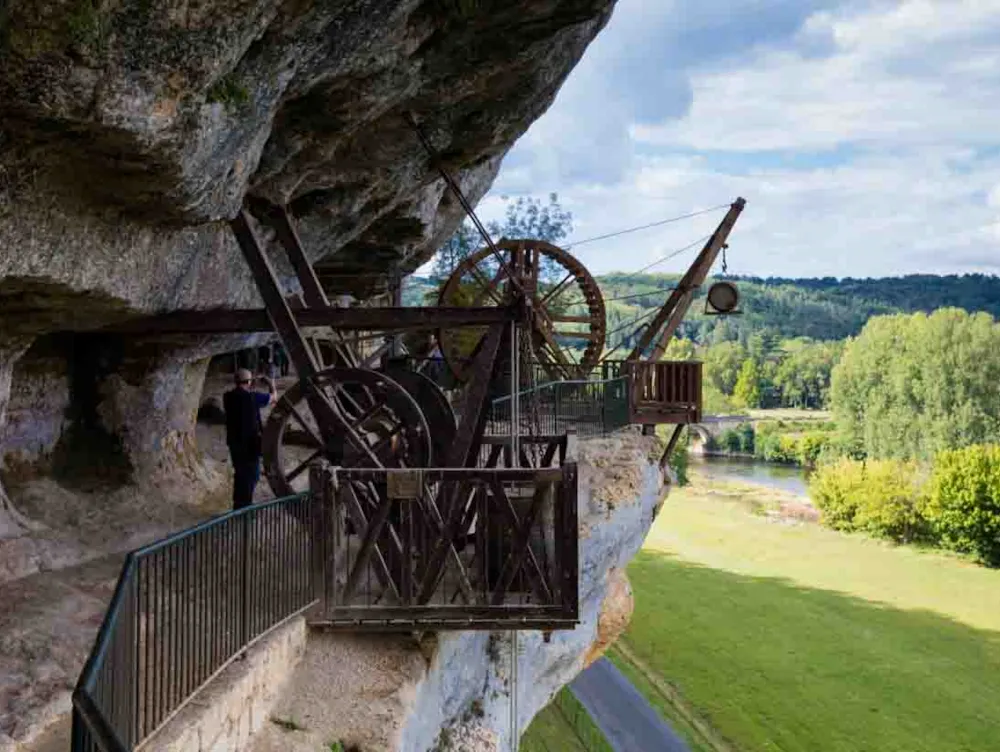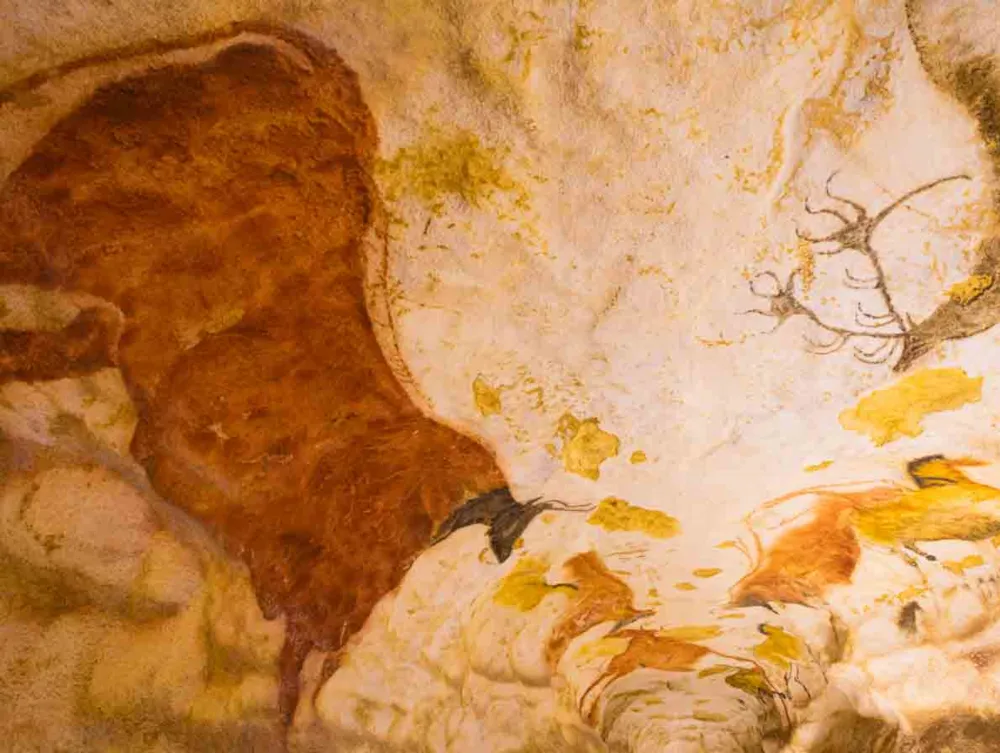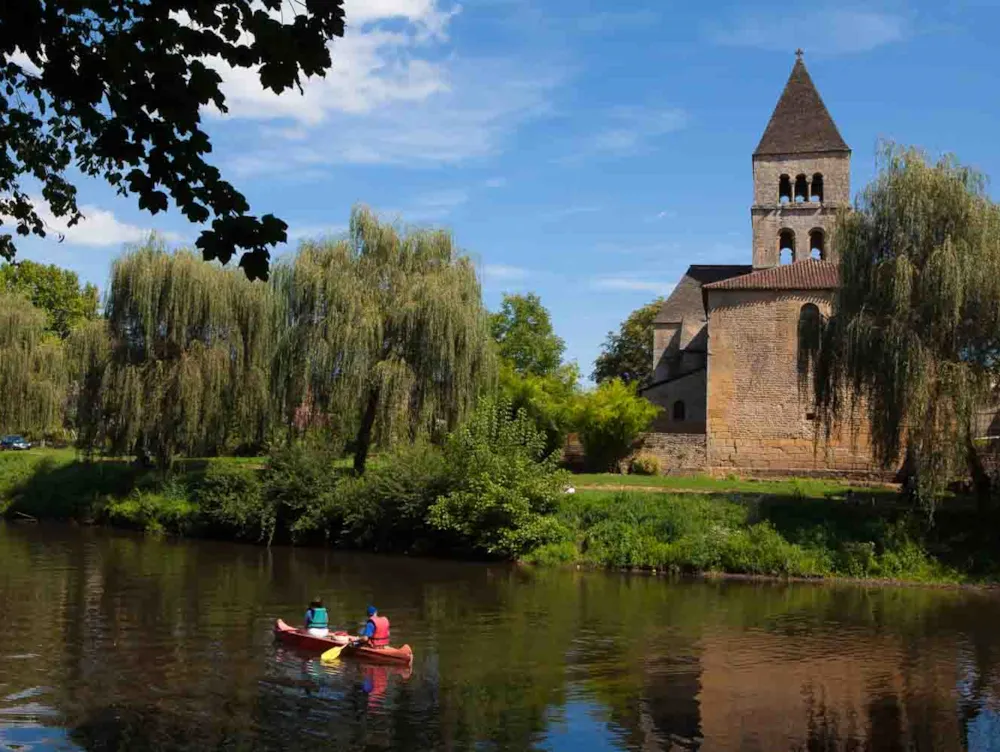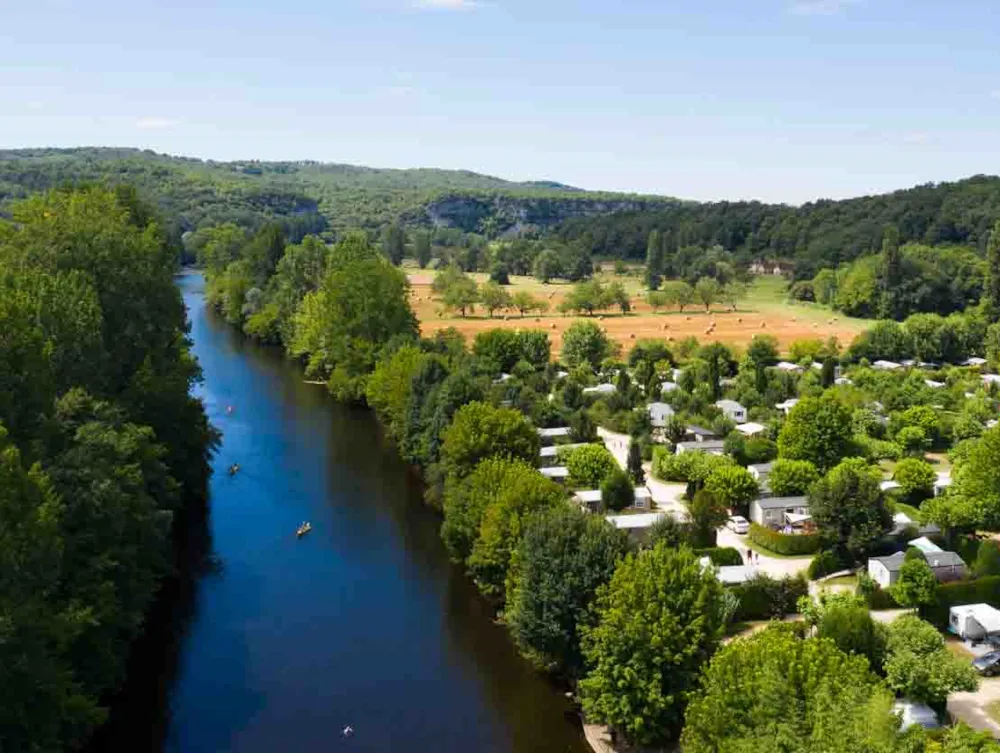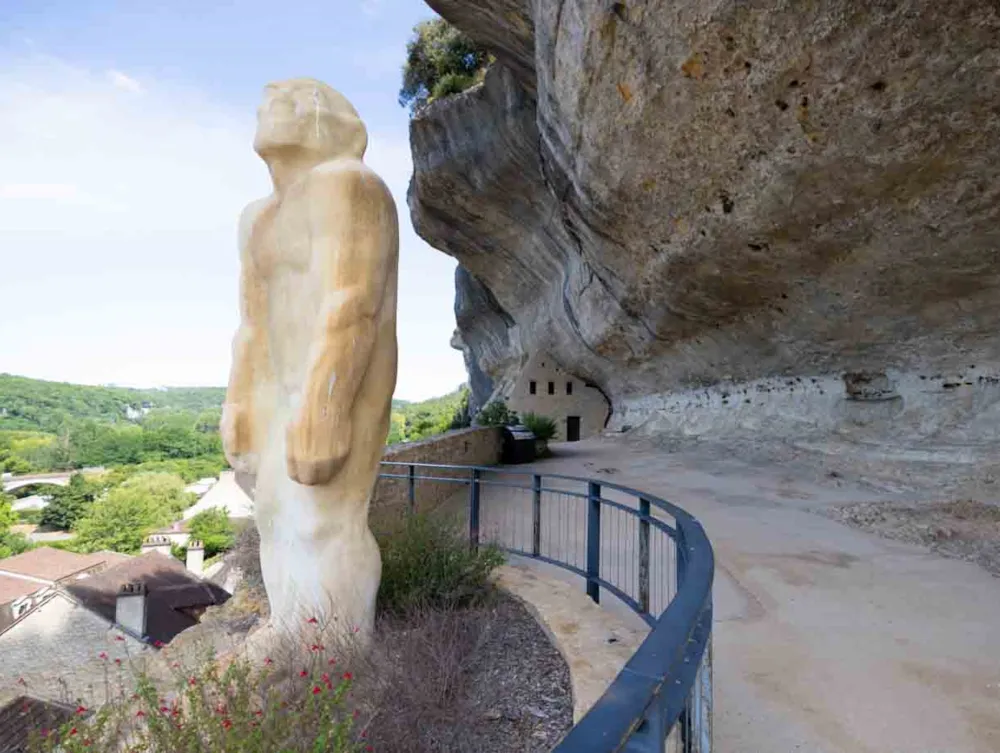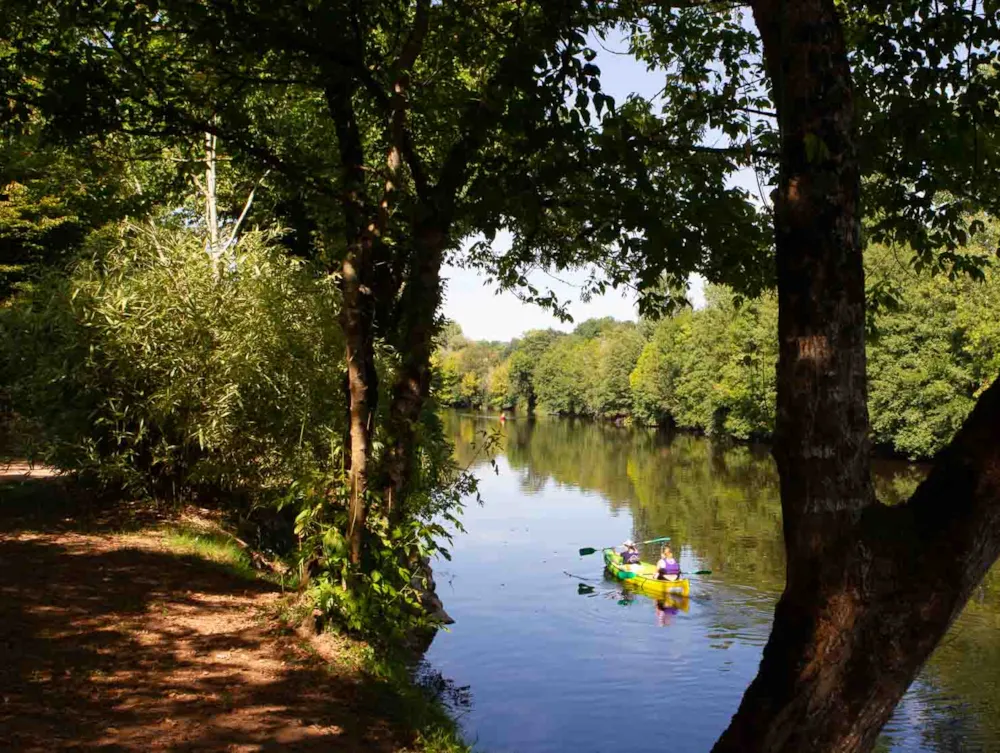A valley for outdoor activities
Like the Dordogne, the Vézère region can be explored both from the top, on hiking trails, and from the water, on a canoe trip. Canoeing is a great way to admire the region. There is always a canoeing base close to the campsite where you spend your holiday in the Périgord Noir. Some establishments even offer their own canoes. You can return to the campsite after your trip.Camping holidays in the Prehistory Valley
The Vézère river rises on the Millevaches plateau in Corrèze. Once in the Dordogne, it flows north of Sarlat before emptying into the Dordogne at Limeuil, a village listed as one of the Most Beautiful Villages in France. In the Périgord Noir region, listed prehistoric sites dot the banks of the Vézère. Human settlement in this valley dates back over 400,000 years. From this long history, the Vézère valley has inherited 147 sites and 25 decorated caves, including no fewer than 15 UNESCO World Heritage sites. The most famous of these is, of course, the Lascaux cave in Montignac. Discovered in 1940, this cave is one of the jewels of cave art, with its walls decorated with 20,000-year-old cave paintings that have earned it the nickname of the "Sistine Chapel of Prehistory". Today, visitors can no longer visit the original cave, which is closed to the public in order to preserve it, but a faithful reproduction, combined with a magnificent museum. Several campsites in the Montignac area are excellent starting points for visiting the facsimile of the Lascaux cave. To learn more about prehistory and the extraordinary heritage of the Vézère valley, we recommend a visit to the Musée National de la Préhistoire in Les Eyzies de Tayac. This superb museum, built into the cliffside of this village nestling on the banks of the Vézère, offers a fascinating insight into the world of our ancestors, helping us to understand the unique character of the Vézère valley and why
Les Eyzies de Tayac is known as the prehistory capital of the world.
As well as Lascaux and Les Eyzies de Tayac, two of the other treasures of the Vézère valley are the troglodytic fortresses of La Roque Saint-Christophe, not far from Saint Léon sur Vézère, and La Madeleine. These two sites, carved out of the cliffs, have been inhabited from prehistoric times to the Renaissance, and together tell the story of a large part of the history of the Dordogne and the Vézère valley. When you follow the river, it's easy to understand why our ancestors settled in this valley. With its unspoilt landscapes of rolling green hills and blonde stone cliffs, it's a most attractive setting. So it's hardly surprising that campsites have sprung up along the water's edge amidst these picture-postcard landscapes. There are plenty of campsites around the main towns and villages of Saint Léon sur Vézère, Le Bugue, Les Eyzies de Tayac and Montignac. There are plenty of campsites for you to choose from, including 3-star, 4-star and 5-star campsites, campsites with indoor swimming pools and campsites with entertainment for children and families. For your stay north of Sarlat, the campsites have bare pitches for caravans and motorhomes, as well as accommodation such as mobile homes available to rent. Some of these establishments boast large water parks, top-of-the-range facilities and a wide range of services, particularly those offered by groups such as Capfun or Sandaya, while others will appeal mainly to lovers of nature and tranquillity, with pitches by the river. For children, whichever campsite you stay at has a play area. And why not take them to the village of Le Bournat? Closer to home than the Lascaux paintings, this park recreates the life of a Dordogne village in the 1900s with, among other things, period attractions and a mini-farm. Children will love it.




